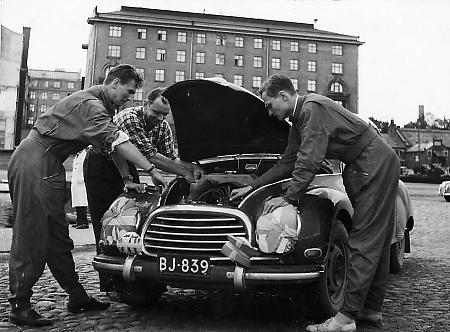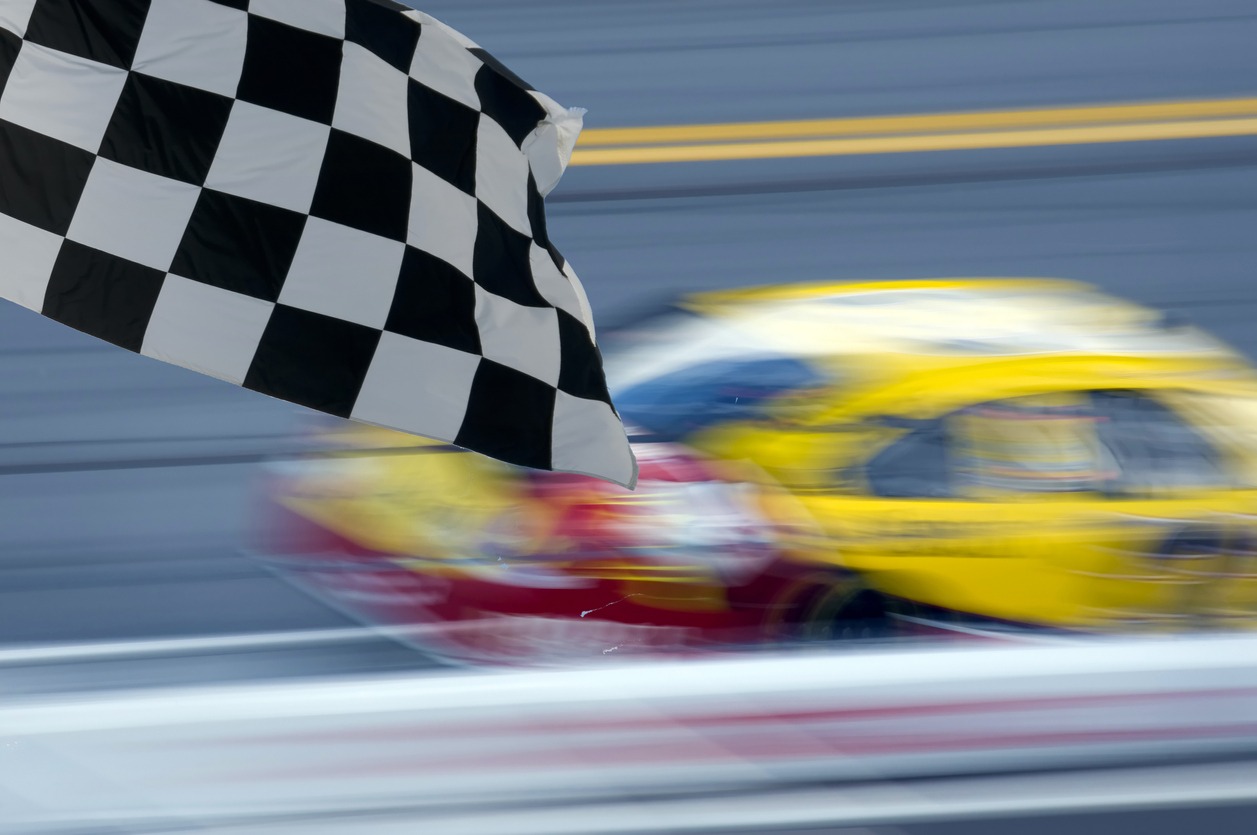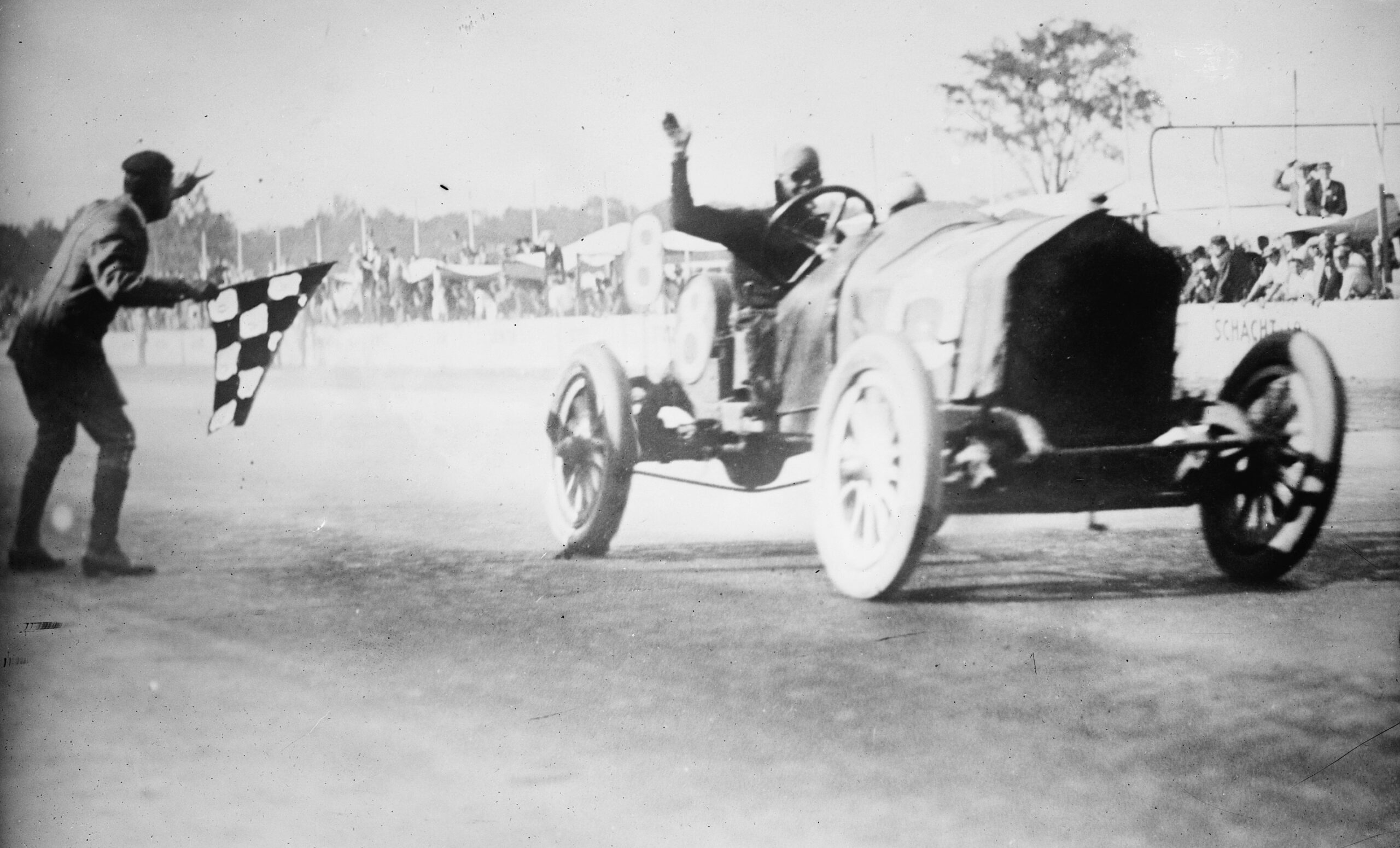From Wimbledon to the World Series, every sport has a prestigious event that governs the best of the best. It’s no different in the sport of racing. Motorsports is a relatively new sport that rose to prominence in the twentieth century, and drivers worldwide vie in these events to win their career-defining title.
Notable races include Formula One, the most popular motorsport, the Indianapolis 500, the Monaco Grand Prix, and the 24 Hours of Le Mans. Motorsports is a growingly popular sport with a sizable fan base. From endurance off-road rallies to circuit racing, there’s a race for almost everyone. This article lists the world’s most famous auto races.
Monaco Grand Prix – A Jewel in the Formula One Crown

Since 1929, the Formula One Monaco Grand Prix has been held yearly on the Circuit de Monaco. The race winds through Monaco’s small city streets, with elevation changes, tight corners, and tunnels. The Formula One international racing series, which is the most expensive way of racing globally, consists of drivers who must have cars that meet yearly changing rules. Furthermore, the Monaco Grand Prix, which takes place on the last weekend of May, is among the most difficult courses on the calendar.
The Monaco Grand Prix is arguably the most glamorous and prestigious automobile race in the world. Held on the narrow, winding streets of Monte Carlo, the race challenges drivers with its tight corners, elevation changes, and a tunnel, making it one of the most demanding tracks in Formula One. The glitz, glamour, and history of Monaco make it a favorite among drivers and fans alike.
Interesting Facts:
- Circuit Changes: The track layout has remained largely unchanged since 1929, making it one of the oldest and most traditional circuits in current use.
- Underground Pit: Monaco is the only Grand Prix with a pit lane located partially in a tunnel under a hotel.
- Shortest Track: Monaco has the shortest lap length in the Formula One calendar, emphasizing driver skill over car speed.
- No Podium: The Monaco Grand Prix is unique in not having a conventional podium; winners are celebrated on the royal box steps.
- Yacht Views: Spectators can watch the race from yachts in the harbor, a viewing experience unique to Monaco.
The Indianapolis 500 – The Great American Race
The Indianapolis 500 is a 500-mile race held annually in the United States in which drivers race around a 2.5-mile circuit. Their top speeds can reach 230 miles per hour, making it a dangerous track.
The track was dubbed “the brickyard” because it was primarily paved with bricks in 1909, and a yard of the initial brick is visible at the track’s beginning. It is among the top three races globally and is part of the Triple Crown. It is a race that recognizes its traditional roots and holds highly regarded pre and post-race ceremonies.
Interesting Facts:
- Milk Tradition: The winner of the Indy 500 traditionally drinks a bottle of milk, a custom started by Louis Meyer in 1936.
- The Borg-Warner Trophy: The trophy features the bas-relief sculptures of every winner’s face since the race’s inception in 1911.
- First Live Radio Broadcast: The 1922 Indy 500 was the first live radio broadcast of a sporting event in the United States.
- Balloon Tradition: Since 1947, a balloon release has been a part of the pre-race festivities.
- No Advertising: The Indianapolis Motor Speedway didn’t allow any commercial advertising on its walls until the mid-1960s.
24 Hours of Le Mans – The Ultimate Endurance Test
The 24 Hours of Le Mans, also referred to as the “Grand Prix of Endurance and Efficiency,” was first held in 1923. The Triple Crown of Motorsport consists of this race, the Monaco Grand Prix, and the Indy 500. The race transpires at the Circuit de la Sarthe, a mix of closed public and specialized racing roads.
The race is hosted in June and starts in the mid-afternoon and ends the next day at the same hour it began. The race is over 3,110 miles long. Three drivers are permitted to drive a competing vehicle, allowing them time to eat and rest. The rules and regulations have shifted over the decades due to the unique 24-hour competition and to keep the drivers safe.
Interesting Facts:
- Garage 56: This special garage is reserved for innovative cars, which are not part of the competition but are invited to showcase new technology.
- Le Mans Start: The traditional standing start, with drivers running to their cars, was discontinued in 1970 for safety reasons.
- The Mulsanne Straight: This 6 km long straight was famous for allowing cars to reach their maximum speed before it was broken up with chicanes.
- Movie Fame: The race was the subject of the 1971 film “Le Mans” starring Steve McQueen.
- First Televised Race: The 1959 Le Mans race was the first to be televised live, showcasing the event’s growing popularity.
The Daytona 500 – NASCAR’s Premier Event
The Daytona 500 is the most important and prestigious race in the NASCAR calendar. Known as “The Great American Race,” it is held at the Daytona International Speedway in Daytona Beach, Florida. With high-speed drafting and close racing, the Daytona 500 is a fan favorite and a highlight of the NASCAR season.
Interesting Facts
- President’s Attendance: The 2020 Daytona 500 was the first to be attended by a sitting U.S. President, Donald Trump.
- Photo Finish: The 1959 inaugural race was so close it required a three-day review of photographs to declare a winner.
- Jet Dryers: In 2012, a collision caused a jet dryer to explode, leading to a two-hour delay to repair the track.
- The France Family: The race was founded by NASCAR’s founder, Bill France Sr., and his family still owns the track and the series.
- Richard Petty’s Dominance: Richard Petty, known as “The King,” won the Daytona 500 a record seven times.
The Bathurst 1000 – Australia’s Great Race
This event is held in Bathurst, New South Wales, Australia, on the Mount Panorama Circuit every early October. This race began in 1960 as the pinnacle of Australian motorsport before relocating to Mount Panorama in 1963.
The race track is constructed up of public roads, but the elevation, tight roads, and sharp turns present a challenge for the drivers. The V8 supercar race, now known as the Supercars Championship, is always fiercely contested.
Interesting Facts
- Kangaroo Hazards: Wildlife, particularly kangaroos, can pose a unique hazard on the Mount Panorama circuit.
- First Televised Race: The Bathurst 1000 was first televised in 1963 and is now one of Australia’s most popular sporting events.
- Track Public Road: The Mount Panorama Circuit is a public road outside race times and has a speed limit of 60 km/h.
- Peter Brock’s Record: Peter Brock, known as “The King of the Mountain,” won the Bathurst 1000 nine times.
- Unusual Trophies: Past trophies have included mounted rocks and pieces of the track itself.
Dakar Rally – A Test of Survival
The Dakar Rally isn’t for the timid. It is an exciting race that takes place in deserts worldwide, but it has only been held in Saudi Arabia since 2020. The race usually costs $75,000 to enter and has claimed the lives of 28 people since its commencement in 1978.
It’s an off-road endurance race open to anyone with the courage to compete. You must have the necessary funds and be at least 18 years old to enter. The event features five vehicle classes: cars, quads, trucks, motorcycles, and UTVs. The distances of each stage range from short to 900 km (560 miles) each day.
Thierry Sabine got stranded in the Ténéré Desert in the 1975 Abidjan-Nice Rally, and thus the race was born. Sabine concluded that the desert would be an ideal location for a rally. In 1978, 182 people started the first race in Paris, but only 74 finished the journey to Dakar, Senegal. It’s an adrenaline-fueled rally that draws the bravest of souls.
Interesting Facts
- Route Changes: Originally from Paris, France, to Dakar, Senegal, the rally has been held in South America and Saudi Arabia due to security concerns.
- Open to Amateurs: While professional drivers compete, amateurs are also allowed to enter, comprising a significant portion of the participants.
- Fatalities: The rally is known for being extremely dangerous, with numerous fatalities among competitors and spectators over the years.
- Marathon Stages: Competitors have marathon stages where they cannot receive outside assistance, testing their mechanical skills.
- Diverse Vehicles: The Dakar Rally includes multiple vehicle categories, including cars, trucks, motorcycles, quads, and UTVs.
Rally Finland – The High-Speed Rally Challenge

Rally Finland, also known as the Grand Prix of rallying, is a rally competition held in Central Finland, the fastest affair in the World Rally Championship. It began in 1951, but by the late 50s, it had evolved into a rally format. It now takes place in July and August, with modified road cars rather than off-road vehicles.
Also known as the Finnish Rally and formerly the 1000 Lakes Rally, is one of the most popular events in the World Rally Championship (WRC) calendar. Renowned for its fast gravel roads, breathtaking jumps, and high-speed corners, it is often referred to as the “Grand Prix on Gravel.” The rally is celebrated for its unique challenge, requiring precision and nerve from the drivers, and is a spectacle of skill and speed in the scenic Finnish landscape.
The race takes place on wide, smooth gravel roads with blind crests and large jumps. Thousands of spectators attend this rally as well.
Interesting Facts
- Flying Finn: Known for high speeds and jumps, it’s often called the “Finnish Grand Prix” due to the rally cars ‘flying’ over crests.
- Smooth Gravel Roads: The rally is famous for its smooth, fast gravel roads and spectacular forest scenery.
- Home Advantage: Historically, Finnish drivers, known as the “Flying Finns,” have had significant success in their home rally.
- Oldest Rally in Finland: First held in 1951, it’s the oldest rally in Finland and one of the oldest in the World Rally Championship.
- Roller-Coaster Roads: The rally’s characteristically roller-coaster roads are a unique challenge for drivers, requiring precise timing and control.
Pikes Peak International Hill Climb – The Race to the Clouds
This yearly car race takes place on Colorado’s Pike Peak. It begins at mile 7 of the Pikes Peak Highway and climbs to 4,720 feet (1,440 meters). At the end of the race, the drivers reach 14,115 feet (4302.25 meters) above sea level.
Previously, the track had both bare and paved sections. However, the full track was paved in August 2011. The total length of the track is 12.42 miles (19.98 km). Car racing is among the most popular sports in the world. It is an exciting sport played in a variety of formats all over the world. Rally races require stamina, skill, and a strong mindset to complete, whereas Grand Prix races require incredible endurance and skill to win. Everyone can enjoy different types of motorsports.
Interesting Facts
- Unpredictable Weather: The race is known for its rapidly changing weather conditions, which can go from sunny to snow within minutes.
- No Guardrails: Much of the course lacks guardrails, presenting a significant risk of steep drops.
- Electric Vehicle Records: Electric vehicles have been gaining prominence, setting records and proving the potential of EV technology in racing.
- Family Tradition: The Unser family has a long history of success at Pikes Peak, with several family members winning multiple times.
- Altitude Challenges: The high altitude of the summit, over 14,000 feet, significantly reduces engine power and affects driver stamina.
The 24 Hours of Nürburgring – An Endurance Racing Challenge
The 24 Hours of Nürburgring is a day-long endurance race held at the Nordschleife (north loop) of the Nürburgring in Germany, often regarded as one of the most demanding and longest race tracks in the world. Known for its treacherous layout, unpredictable weather, and the sheer number of participating cars, this race tests the endurance and skill of drivers like few others. The combination of professional teams and amateur racers, along with the challenging nature of the ‘Green Hell’, as the track is affectionately known, makes this race a unique and revered event in the motorsports community.
Interesting Facts
- Mostly Amateur Drivers: The event is unique for its mix of professional and amateur drivers, with more amateurs participating.
- Diverse Range of Cars: The race features a wide variety of cars, from small hatchbacks to top-class GT3 cars.
- Nordschleife’s Challenge: The Nordschleife (‘North Loop’) is known as one of the most challenging and dangerous racing circuits in the world.
- Large Number of Entries: The event regularly sees over 200 cars entering the race, making it one of the largest racing grids.
- Fan Culture: The race is known for its vibrant fan culture, with spectators setting up campsites and enjoying a festival-like atmosphere.
The Belgian Grand Prix at Spa-Francorchamps – Formula One’s Favorite Circuit
The Belgian Grand Prix, particularly at the Spa-Francorchamps circuit, is one of the most iconic races in the Formula One calendar. The track is famous for its complex and high-speed corners, such as Eau Rouge and Blanchimont, as well as its history of dramatic weather changes. Spa is often hailed by drivers and fans alike as one of the most challenging and rewarding races of the season, offering a mix of high speed, technical precision, and natural beauty.
Interesting Facts
- Eau Rouge and Raidillon: The circuit is famous for the Eau Rouge and Raidillon corner combination, one of the most challenging in Formula One.
- Longest Circuit in F1: Spa-Francorchamps is the longest circuit in the current Formula One calendar.
- Variable Weather: The track’s microclimate often leads to varying weather conditions at different parts of the circuit simultaneously.
- Historic Track: The original Spa circuit was a high-speed track laid out on public roads, known for its danger and high-speed straights.
- Belgian Greats: Belgian drivers like Jacky Ickx and Thierry Boutsen have shone at their home Grand Prix, adding to the race’s national significance.
Final Thoughts
These races, each unique in their challenges and allure, form the heart of the world’s auto racing passion. They test the limits of human and machine, capture the imagination of millions, and create legends in the world of motorsports. Whether it’s the precision and glamour of Monaco, the endurance and history of Le Mans, or the high-speed drama of the Indianapolis 500, each race offers a unique and thrilling experience that cements its place in the pantheon of great motorsport events.




